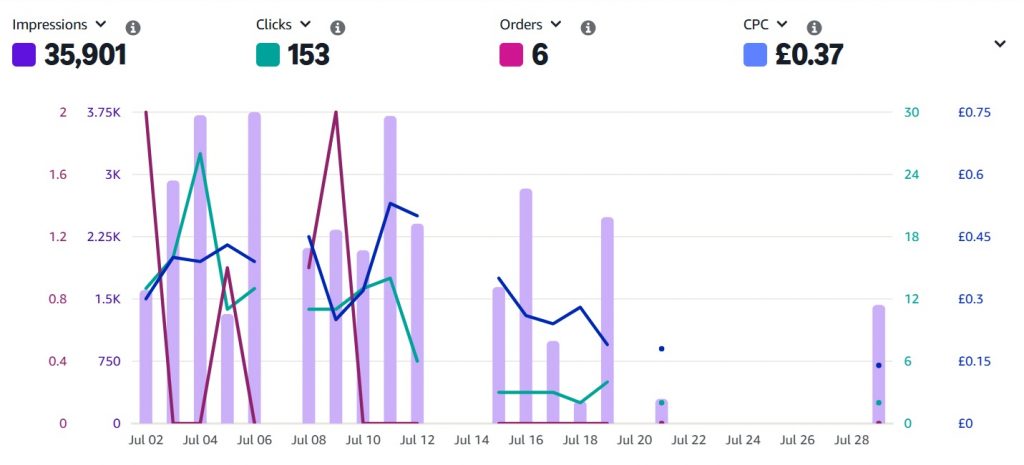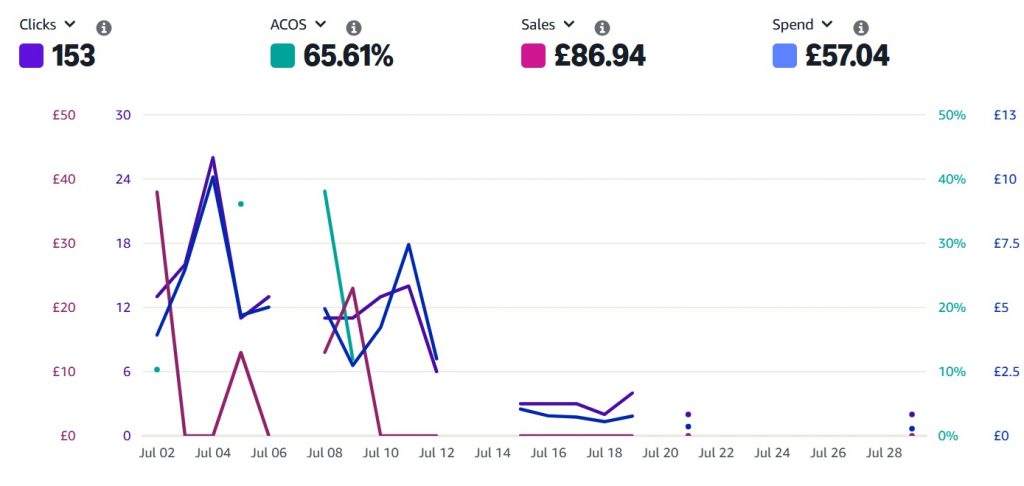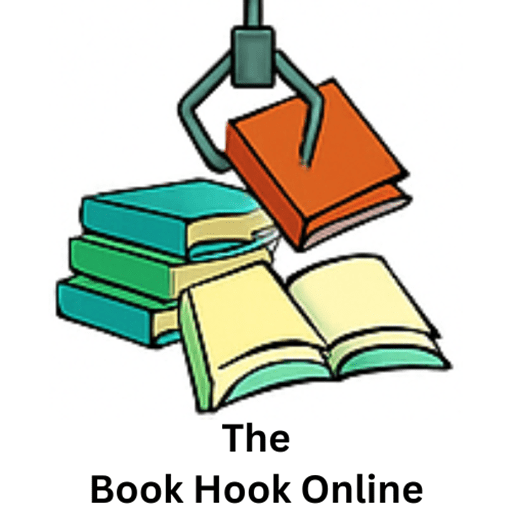Synopsis
Many new self-published authors on Amazon KDP will want to learn more about how to get their books noticed on Amazon. So, they will do some research and take the step of setting up an Amazon Ad, to promote their work. They more than likely review the guides on Amazon, find some advisory videos on YouTube, which explain how to select good keywords related to their book, how to monitor the progress of the Ad and hope they get some sales for their self-published gem. This is exactly what I did. But what you should look out for is that advertising statistics are based on the total value of the book rather than the royalties you receive as the author which can make the cost of Amazon ads expensive. This blog explores this in more detail.
Why Advertise on Amazon?
Amazon has more than 300 million active customer accounts worldwide. It is not just a marketplace; it’s a search engine where millions of buyers start their product discovery. Advertising on Amazon means putting your products in front of high-intent shoppers and leveraging advanced data to refine your targeting and creative.
Key benefits include:
- Massive Reach: Access to a global audience that is already primed to purchase.
- Data-Driven Targeting: Use Amazon’s vast trove of shopper behaviour and purchase history to reach the right customers.
- Attribution and Analytics: Track ad performance in real-time, optimize campaigns, and measure ROI with granular reporting tools.
- Brand Building: Enhance brand presence through custom content, video, and brand-store integration.
Sponsored Products
As individual self-publishers, most authors will set-up a “Sponsored Product” ad.
These ads are the workhorses of Amazon’s ad platform, driving immediate visibility for specific listings. Sponsored Products are highly effective because they blend seamlessly with organic search results. The advertiser selects keywords (manual targeting) or allows Amazon to choose for them (automatic targeting). When shoppers click, the advertiser pays a fee. Optimizing keyword bids, negative keywords, and keeping an eye on the Advertising Cost of Sales (ACoS) is crucial to success.
The cost of Amazon Ads – Bid Pricing for Impressions
But what is the cost of Amazon Ads?
Advertisers configure bid prices against each keyword used in the advertising campaign which is the amount they are willing to pay as a fee as a result of a shopper clicking on their product. The amount of the bid price helps the advertiser gain impressions which is number of displays of the product on screen as a result of shoppers searching for keywords.
Amazon provides a guide range for the bid price of each keyword and typically suggests that the advertiser should bid the median value. Defaulting to the suggestion can be the first mistake advertisers make. Remember Amazon will make money from advertising as well as any sales achieved through the ads.
Initially set your bids low, even so low that few impressions are obtained. If this happens then gradually increase the bids until impressions start. Then see if how long it takes to gain clicks and then orders.
The cost of Amazon Ads – Impressions, Clicks & Orders
Typically, when an advertiser gains impressions a percentage of these will result in shoppers clicking on the product and a percentage of the clicks will result in orders.

The higher the percentage of clicks that convert to orders the more cost effective the ad. This will result in a lower Advertising Cost of Sales (ACOS) percentage.
The ACoS percentage is the total fee accrued as a result of shopper clicks divided by the total value of all orders multiplied by 100. Therefore, a low ACoS is good.

The real cost of Amazon Ads
At first glance, it might appear that the advertiser has spent less on advertising than the than the total value of sales received. Technically this is true. But, for the self-published author they are not receiving the total value of the sales, they are receiving a royalty from each sale, which can vary from book to book and market to market.
The royalty is a percentage of the profit made from a sale, where the percentage is determined when the book is published. The profit from the sale of the book is the total cost of the book less the printing costs and less any amount withheld by Amazon for tax purposes, which might for example be 30% of the price of the book less the printing costs. So, if a book is priced at £12 and the printing cost is £5, the amount withheld for tax is provision is £2.10, leaving £4.90 as the profit in the book. If the royalty rate is 60%, as an author the amount you receive will be £2.94. This ends up being about a quarter of the book cost.
Using this as a guide in the example shown above where the total sales amount to £86.94, this is likely to gain a royalty of £21.74. This means that in order to make the sales it cost the author £35.30, the difference between the advertising spend and the royalties received. The author is therefore out-of-pocket.
Controlling the budget
It is possible to control the budget by restricting the amount of daily spend during an advertising campaign, whereby the campaign will be suspended for the remainder of the day once the budget is reached.
Another way is to use Portfolios, where you can group ads together within a market place and set a budget limit across the group of ads over a fixed time period.
You can also opt to manually pause campaigns at certain times.
You might review the pricing of the books to try and gain higher royalties but be aware that as printing costs can be quite high percentage of the total cost, the risk would be that the book appears over expensive to shoppers.
Remember, also not to overbid for keyword impressions when starting out.
Conclusion
To get books noticed on Amazon amongst the sea of self-published titles that exist it will be necessary to advertise. But using Amazon Ads, needs to be done with care and the advertiser should closely monitor progress. Cost versus reward, is likely to be a balance that is not achieved without some experimentation and time.
There are alternatives to Amazon Ads using social media and listing on other websites that are capable of providing universal links to the shoppers local Amazon site, for which the site may gain a commission from Amazon. This is how The Book Hook intends to help the self-published author.
J K Mullins
The Book Hook Online

